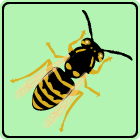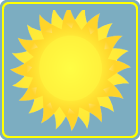


Click on the correct answer.
You will see the left side of an equation. Then you will see and hear two possible answers for the right side of that equation.
Click on the correct answer.
There are 10 questions in this test.
to start the lesson

louis
"Words to decimal numbers"
Elementary math lessons to learn
'Total cost: 2 items' for 3rd grade
Total cost of 2 items
Learn how to add money costs with this topic
When you buy things you need to know how much it will cost you so that you know if you have enough money to pay for them. So we use addition to calculate the TOTAL cost by adding up each item cost. Adding money is similar to adding any other numbers in math except you have to take care of converting from coins to notes.
For instance, if I went and bought 2 things at 90 cents each, what would the total cost of the items be?
90¢ + 90¢ = 180¢ = $1.80
So when the total goes over one dollar, we need to get an answer in both dollars and cents. So if we add 90 cents and 90 cents we have a total of 180 cents but we know that 100 cents is 1 dollar, so we have 1 dollar and a remainder of 80 cents.
Related topics:
With these interactive math lessons you will be learning "Total cost: 2 items" from
3rd grade / Addition in 3 easy steps. The math in our lessons consists of 5 questions that ask you to use addition to find out the total cost of the 2 items.
Word problems: adding items and item costs
Learn how to add items and how to add the cost of multiple items
Topic titles:
- Total number of items
- Total cost of 2 items
- Total cost of 3 items
Sometimes in math the problems are not given as numbers but as words and sentences. This doesn't mean that the math you have to do is different, but it does mean you have to work out first what the sum you are being asked to do is, and then work on the sum itself. In this set of topics, the questions are to do with adding up either the total number of items or the total cost of a set of 2 or 3 items.
When we want to understand math addition word problems, we need to read carefully through the text and create the sum that takes the number information out of the text and puts it in a sum. When we read the text "Logan has 30 Rich tea biscuits and 17 Digestives" we can see that the sum involves finding how many biscuits Logan has in total which we find by adding up the number of Rich tea biscuits and digestive biscuits. So the total number of biscuits is 30 + 17 which is 47.
When the sentences we are looking at involve money our addition sum will involve adding amounts of money rather than numbers of items. Given the text "Grace buys 3 pencils for 54¢, 64¢ and 75¢." we realise that we need to add the 3 amounts to come to the total that Grace has spent on pencils. Because that total is greater than 100¢, the answer will be in both dollars and cents. Can you work out what that amount will be? Try the topic "Total cost of 3 items" to check your answer.
There are 3 easy math lesson activities in this "Total cost: 2 items" tutorial. These activities progress step by step to help you the learner gradually master this math topic. The activities are based on "3 stage questioning", a method of learning that quickly and easily builds your confidence as you work through the short series of lessons that strengthen your knowledge of the math that you want to learn.
When you have completed the tutorial for a topic, you should try some of our games before finally doing the test for your chosen topic. See the Help box below for detailed instructions on how to use the lesson activities to help you learn your math more easily.
UXO * Duck shoot * The frog flies * Pong * Cat and mouse * The beetle and the bee
Rock fall * Four in a row * Sow grow * Choose or lose * Mix and match





How to use our tutorials to learn
'Total cost: 2 items' for 3rd grade
Introduction to the math topic
You start the tutorial with a lesson that introduces the math you will be learning. You will see a set of questions one at a time, and for each question you will see the written answer and also hear the answer to that question.
Repeat the question/answer by clicking on the brown speaker sign. Repeat the question/answer and expand the question graphic by clicking on the question box. Move between questions using the arrow buttons below the question. If there is additional information available for your chosen topic, the "i" button on the left upright bar will be brown on white. Click on the button to load the additional lesson information into the main interface.
Either / Or math lesson
This lesson moves on from the "Introduction" lesson and offers you two possible answers to each question. So, you will see a question then a voice will ask "Is this ... or is it ..." and you will have to choose which of the answers is the one that matches the question.
You choose an answer by clicking or tapping on one of the two answer boxes below the question. You can play the audio for each answer again by clicking on the speaker icon beside the written answer (if robot speech is available and enabled). The program will let you know each time whether you answered correctly. A star will light up red for a wrong answer or white/black for a correct answer.
This lesson asks you the questions in a random order compared to the introduction. At the end of the lesson, you can choose whether to repeat the lesson or move on to the next one.
What is it? math lesson
The final lesson of the tutorial shows you multiple possible answers for each question - you must choose the correct one. You are asked a question and below it are a list of two, three, or four possible written/numeric answers from this topic. Pressing the speaker icon will play the math audio for that answer.
For each picture, click on the answer that matches the question. The program will tell you whether you are right or not. As with the Either / Or activity a system of stars indicate your right and wrong answers. The What is it? lesson will show you all the questions you learned in the Introduction but in a random order.
When you complete the "What is it?" lesson, you can choose whether to go on to play some games with this topic, or whether you want to repeat some or all of the lesson activities in this tutorial. You should expect to get 80% of the answers correct in most of the activities before trying some of the Math games with this topic.











